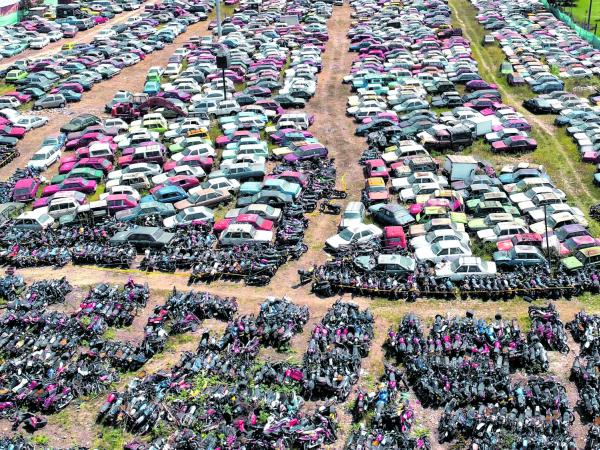VILLA CLARA, Cuba. — Through Telegram trading groups, Michel and Adrián are dedicated to tracking dollars, euros and Freely Convertible Currency (MLC) to acquire them at a price lower than the maximum daily rate. Although it may seem incredible, their age does not exceed 25 years and they usually move towards the homes of potential sellers with backpacks in which they carry considerable bales of Cuban peso bills.
For Michel, the typical figure of the dollar seller changed a long time ago in the country. “If before they were guys with fanny packs and gold chains who hung around exchange houses looking for clients, now the trade can be practiced by anyone, even a university graduate,” says the young man who prefers to describe himself as a “wrestler,” and not as a “reseller”.
In that sense, the Cuban Penal Code establishes the sanction of “deprivation of liberty for two to five years or a fine of three hundred to one thousand quotas, or both, to those who carry out exchange operations in black markets of national or foreign currencies, or through channels other than those legally established.”
However, Michel defends himself by claiming that “everyone here buys and sells MLC, exchanges them for dollars and sells them again. It’s like the story of the good pipe”, he emphasizes. Based on his short experience buying foreign currency, he affirms that at least in Santa Clara “large amounts of dollars or euros are not moved in cash. Most of the people who sell through Facebook groups have, at most, 1,500 or 2,000, which are usually gifts left by relatives or associates who come to visit. Those who have more than that, surely they are not going to sell them”.
In the last week the price of the currency in the informal market has dropped ostensibly, falling from 200 pesos to about 180 or 185 CUP. These two boys believe that it may be due to the low amount of dollars in circulation.
A recent article, published by the digital medium The touch, specifies that “in this decentralized market there is no single rate for transactions at a given time. There are market makers (market makers), people who buy and sell currencies, and who announce their buying and selling prices on the networks. There are many other participants who are only buying or selling, and may or may not announce their prices on the networks”.
“Everyone who sells USD 180, when I write to him, he already sold it, or he does not respond,” reads a Facebook post in “La Candonga in Santa Clara.” During the last two weeks, just when the dollar began to fall, several of these groups have noticed more than a hundred publications announcing the sale of foreign currency at a much lower price, and from false profiles that do not answer the messages “to the private ”.
A user identified in networks as Félix Fernández, dedicated to the same “trade”, assures that many of the dollar resellers use that modus operandi to raise or lower the price of foreign currency in the informal market. “If you fill Facebook with ‘I’m selling USD at 180’ posts, for example, people are going to get desperate and start selling it lower, and so on, until it goes down. Later, the same ones you bought, you start selling at two or three pesos more”, he explains.
Another currency dealer, on condition of anonymity, confirms that this is indeed an effective way to raise prices. “The price of the MLC is calculated depending on the USD. If the dollar goes down, the MLC will go down and so will street prices for clothing, food and everything else,” he maintains.
Even so, there are also people who keep the USD above 200 pesos. “It is a business, just as it can be a vendor of food. Right now everything is sold in that currency, houses, motorcycles, cars…”, Cristian Enríquez from Santa Clara justifies in the aforementioned group.
“The MLC is mine,” a woman named Anabel Conde posted in “La Candonga” in the face of a wave of criticism for announcing a price above the supposed daily rate. “There is a lot of controversy over my publication, but it is my price, I am not in a hurry and that is not spoiled,” she sentenced.
The sellers interviewed assure that the dollar’s decline may be due to a “strategy” that many took advantage of after the false announcement that Nicaragua would suspend the free visa. “The problem with Cubans is that they get carried away,” says Michel and adds: “what they don’t calculate is that now is the end of the year, and where do you buy beers and so on? In MLC stores. Right now it goes back to 200 pesos again. That is a cachumbambé”.
Receive information from CubaNet on your cell phone through WhatsApp. Send us a message with the word “CUBA” on the phone +525545038831, You can also subscribe to our electronic newsletter by giving click here.






